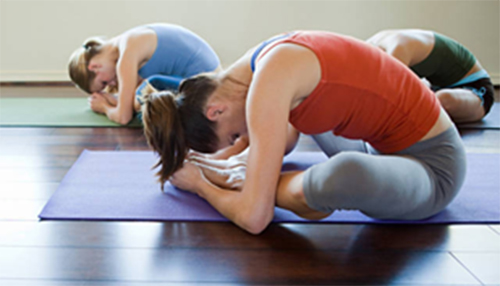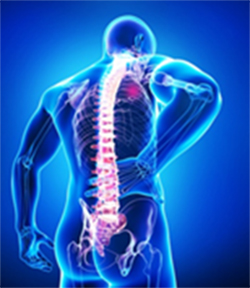Spine Tune is the Fine Tune for your Better Life!

Our spine system is a column of 26 bones -24 separate vertebrae interspaced with cartilage, and the additionally the sacrum and coccyx. The vertebrae are Cervical (7 vertebrae in the neck), Thoracic (12 vertebrae in the chest) or Lumbar (5 vertebrae in the lower back), and between the vertebrae of the spine are thin regions of cartilage known as the Inter-Vertebral Discs. The vertebrae of the spine align, so that their vertebral canals form a hollow, bony tube to protect the spinal cord from external damage and infection. Our spine supports our weight, holds us upright and pays an important role in our movements, without a spinal cord brain and body couldn’t communicate with each other and it is the pathway for impulses from the body to the brain, and from the brain to the body. Many occupations such as nursing, construction, factory work, and even routine office work can place significant demands on your back.
Back pain is a complex phenomenon that, despite a range of interventions to reduce its impact, continues to be a major health burden on individuals, employers, and the society. It is estimated that, from 60% to 80% of any population experience back pain at some point in their lives. Population surveys indicate a high prevalence of back pain as many people do not report their pain, take time off from work, or seek medical treatment. Back injuries not only affect employees but can have profound consequences on employers such as workers compensation payments and court fines.
Risk Factors

The causes of back pain are multi-factorial and considered to be a symptom of a wide range of possible injuries. Three forces affect the spine and can lead to injury: compression, shear and torque. Compression forces push down on or squeeze the spine parallel to the spine axis; for instance, gravity is a constant compressive force. Forces that impact the spine perpendicular to the axis are considered shear forces. Rotational forces are referred to as torque. Exerting too much force on the back by lifting or moving heavy objects, sudden unfamiliar or unexpected movements, repetition of certain movements such as twisting or rotating the spine, poor postures with inadequate back support, obesity or excess weight, inactivity or lack of exercise are some causal factors for spinal injuries and back pain. However, growing evidence links psychosocial risk factors to occupational back pain, particularly monotonous work, perceived high workload, pressure of time, lack of decision making authority, and job satisfaction.
Prevention Strategies and Good Practices

Layout changes and adjustments to the workplace (ergonomics), training workers about causes, risk factors, management through ergonomics programs, and prevention are the most cost-effective strategies for the prevention of occupational back pain. Risk factors identified to date, such as age, and previous back problems are immutable. Indeed, modified work, exercise (swimming or walking 45 minutes 3-4 times a week) and physiotherapy are recommended for the chronicity and recurrence of symptoms and to reduce disability.
However, some good practices for the prevention of back injuries include,
• Paying attention to the postures
Ex: standing by keeping the spine straight, sitting by resting the feet flat, avoiding wallet or materials in back pocket
• Lifting objects properly
Ex: putting the load on the hamstring and abdomen muscles, avoiding twisting or stooping while lifting
• Modifying repetitive tasks
Ex: using lifting devices, adjusting display screen equipments and accessories to the comfort of the user, avoiding bending, twisting and overreaching, and limiting the time spent on carrying materials in hands
• Relaxing
Ex: changing the prolonged position, stretching muscles and walking around
• Healthy diet
Ex: enough calcium and vitamin D (to prevent Osteoporosis)
• Aerobic exercise (150 minutes a week of moderate aerobic activity or 75 minutes a week of vigorous aerobic activity)
Ex: swimming, walking, yoga
• Avoid smoking
Spine is the lifeline!
Take a Breathe and Stay Strong!
Ananth Tamilmaniarasu
HSE Trainer,
Green World Group,
Dubai







Great article…unfortunately many of us have little awareness in this area..write more
Thanks for visiting us. we will update more and kindly visit http://greenwgroup.co.in